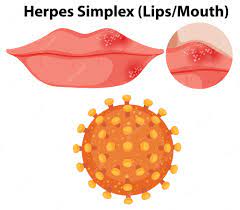Note: This article is for general information only and no medical treatment is claimed. Always consult your doctor for more information and make appropriate changes as per his advice.
Introduction:
Our skin is the largest organ of the body and plays a crucial role in protecting us from external factors. However, there are times when our skin becomes vulnerable to infections, leading to discomfort and potential health risks. Skin infections can range from minor irritations to more serious conditions, but with proper knowledge and preventive measures, you can minimize the chances of these infections and maintain healthy skin. In this blog, we will explore common causes, symptoms, and prevention tips for skin infections.

Understanding Skin Infections:
Skin infections occur when harmful microorganisms, such as bacteria, fungi, or viruses, invade the skin’s layers. They can affect various areas of the body and manifest in different forms. Some common types of skin infections include:
Bacterial Infections:

Impetigo:
Characterized by red sores or blisters that can burst and develop a honey-colored crust.

Cellulitis:
A bacterial infection causing redness, warmth, swelling, and tenderness in the affected area.

Fungal Infections:

Athlete’s Foot:
A common fungal infection that affects the feet, causing itching, redness, and cracking of the skin.

Ringworm
A contagious fungal infection causing a circular rash with raised edges and clear skin in the center.

Viral Infections:
Herpes Simplex:
Typically presents as cold sores or fever blisters, caused by the herpes simplex virus.

Chickenpox:
Characterized by itchy, fluid-filled blisters all over the body, caused by the varicella-zoster virus.

Recognizing Symptoms:
The symptoms of skin infections can vary depending on the type and severity of the infection. However, some common signs to watch out for include:
- Redness, swelling, or inflammation in the affected area
- Itching, burning, or pain
- Blisters, sores, or rashes
- Warmth and tenderness
- Discharge or oozing of pus in severe cases
- Skin peeling or cracking
Prevention Tips:
Practice Good Hygiene:

Wash your hands regularly with soap and water.
Keep your skin clean and dry, especially in areas prone to sweat and moisture.
Avoid Sharing Personal Items:

Do not share towels, clothing, or personal care items to minimize the risk of transmission.
Maintain Skin Moisture Balance:

Use mild soaps and moisturizers suitable for your skin type.
Avoid prolonged exposure to moisture, which can create a breeding ground for fungal infections.
Protect Your Skin:

Wear appropriate clothing to shield your skin from cuts, scratches, and insect bites.
Apply sunscreen with a high SPF to protect against sunburn and reduce the risk of infections.
Be Cautious in Public Places:

Wear slippers or waterproof shoes in public showers, locker rooms, and pools to prevent contact with fungi.
Promptly Treat Wounds:
Clean any cuts or wounds with mild soap and water, and apply an antiseptic ointment.
Cover the wound with a clean bandage to protect it from bacteria or other pathogens.

Conclusion:
Skin infections can range from minor nuisances to potentially serious conditions. By understanding the causes, recognizing the symptoms, and following preventive measures, you can significantly reduce the risk of skin infections. Remember to maintain good hygiene practices, protect your skin, and seek medical attention if you suspect an infection. With a little care and attention, you can keep your skin healthy, radiant, and infection-free.
Disclaimer:
This blog is for informational purposes only and should not be considered a substitute for professional medical advice.

